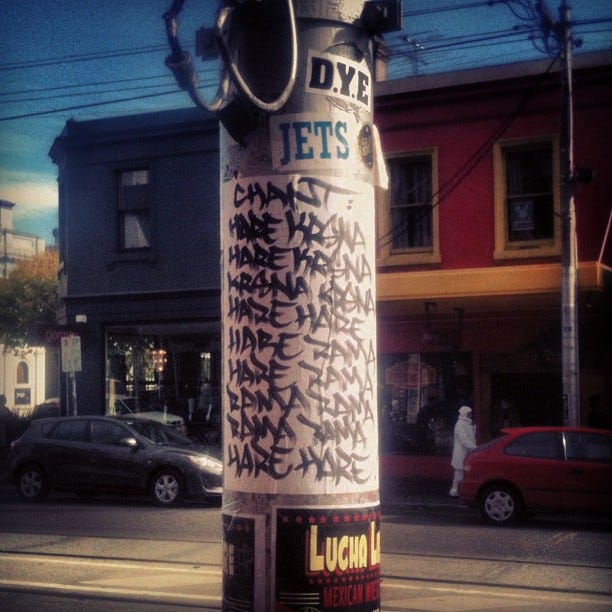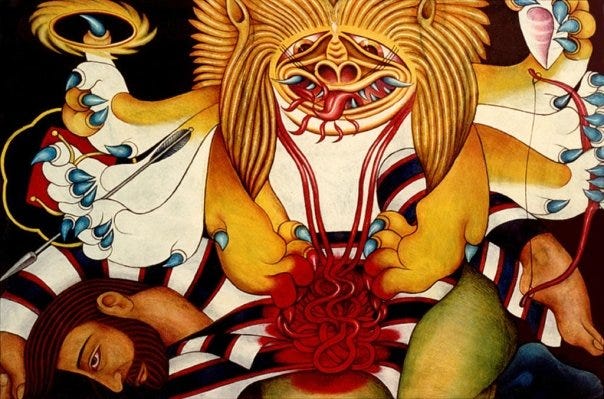Elevation at Death
At the time of death we have to finish that process of perfection. During our lifetime we have to practice the method of approaching that perfection so that at the time of death, when we have to give up this material body, that perfection can be realized.
prayāṇa-kāle manasācalena
bhaktyā yukto yoga-balena caiva
bhruvor madhye prāṇam āveśya samyak
sa taṁ paraṁ puruṣam upaiti divyam
“One who, at the time of death, fixes his life air between the eyebrows and in full devotion engages himself in remembering the Supreme Lord, will certainly attain to the Supreme Personality of Godhead.” (Gītā 8.10)
Just as a student studies a subject for four or five years and then takes his examination and receives a degree, similarly, with the subject of life, if we practice during our lives for the examination at the time of death, and if we pass the examination, we are transferred to the spiritual world. Our whole life is examined at the time of death.
yaṁ yaṁ vāpi smaran bhāvaṁ
tyajaty ante kalevaram
taṁ tam evaiti kaunteya
sadā tad-bhāva-bhāvitaḥ
“Whatever state of being one remembers when he quits his body, that state he will attain without fail.” (Gītā 8.6)
First Impressions
By Vraja Kishor
Now that I had gone to the Hare Krishna temple and survived, I felt brave enough to try one of their “Sunday Love Feasts.” The temple was a lot less imposing on Sunday afternoon with dozens of people around, a lot of them “normal looking.”
Inside, the temple floor was rich checkered marble. Marble pillars lined along the sidewalls, with beautiful original Krishna-paintings in the archways between them. The ceiling was two stories high, and looked like an Indian version of the Sistine Chapel, with a huge painting of beautiful people in robes dancing and chanting in some rural setting. A big, crystal chandelier hung from the middle. Above the pillars, on the second-story level of the walls, were ornate bas-relief statues of Vedic deities dancing, singing, and playing drums and hand cymbals.
At the front of the temple was a stage about a meter high, with three elaborately carved wooden doors, opened so that only pillars and Indian-style arches remained visible unless you looked from the side. Brilliant light streamed out from the altar inside, revealing a huge, incredible wooden structure, carved and shaped more gorgeously than anything I had ever seen before.
This wooden masterpiece from another dimension formed a canopy over three sets of deities. The set on the right included the big round eye that had jumped out and stared at me when I peaked in the door the last time I had been here — three wooden figures, squarish, with exaggerated and simplified eyes and mouths painted over their black, yellow, and white surfaces. The set in the middle was Rādhā and Krishna in marble — big, full of flowers, amazingly colorful and, to use some of my favorite words from Prabhupāda’s books, “sumptuously opulent.” The set on the left were another two marble figures with arms upraised. The entire sight saturated and satisfied my eyes the same way a cake saturates and satisfies the tongue.
Someone was explaining what the Krishna philosophy is all about. I don’t remember much about that, but I remember the dancing! The Krishna’s had these two-headed drums and little metal hand-cymbals, and could really get something going with them. They even had mosh-parts! Their chanting would speed up and speed up and speed up, and then drop into a huge, slow, moshy, stomp. I was leaping and moshing around with my dreadlocks flying all over the place – feeling like a puzzle piece put in the right spot.
People gave me a little distance as I jumped around, but they looked at me with smiles. Some of the Krishna guys would even come over and leap around with me.
By the time it was over, I was sweating and out of breath. I sat there on the floor with paper plate and cup in front of me, in a line with the dozens of other people, plates and cups. Chatter was all around, but I had no one to talk to, and liked it that way. Talking to myself was more fun. A devotee proceeded down the line of plates and people, pushing a plastic bucket in front of him, scooping food onto the plates.
Splish… he dumped some spinach into my plate.
It’s green mass sat there on the white plate, slowly leaking green juice around it. There was nothing in the world I hated more than cooked spinach. Sometimes I would literally vomit when my mom put it on my plate and make me eat it.
Maybe the next bucket would have something I could stomach?
Splash.. This time a devotee plopped down something with a lot of carrots. Besides spinach, there was nothing I hated in the world more than cooked carrots.
I stared at the two dire enemies of my taste-buds, with growing determination. “This stuff is ‘prasādam’” I thought. “Krishna ate it. I should at least try it.”
I spooned a bit of the spinach into my wary mouth. It was delicious! Incredible!
Next, a spoon of the carrots… “What the fuck!?” I shouted to myself in amazement. “Why do I love this?”
– Excerpt from early draft of
Train Wrecks and Transcendence:
A Collision of Hardcore and Hare Krishna
Throwback✌
If you want to see old flicks from when people in Melbourne couldn't avoid Krsna even if they tried let me know🎨
Lord Nrsimhadeva by the talented Rasanandini🧨🧨🧨
Below is a mantra chanted by bhaktas for spiritual protection from the man lion incarnation of Godhead:
ito nrisimhah parato nrisimho
yato yato yami tato nrisimhah
bahir nrisimho hrdaye nrisimho
nrisimham adim sharanam prapadye
Lord Nrsimha is here and also there. Wherever I go Lord Nrsimha is there. he is within the heart and is outside as well. I surrender to Lord Nrsimha, the origin of all things and the supreme refuge.
Support this Zine by getting a T and following me on my things😎







